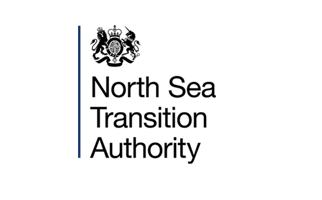
The total cost of UK offshore oil and gas decommissioning has fallen by a further 2% on a like-for-like basis in 2019 to £48bn, according to the Oil and Gas Authority (OGA).
With a shared objective of industry and government to reduce decommissioning costs by at least 35%, the latest annual “UKCS Decommissioning Cost Estimate 2020,” published today shows estimated decommissioning costs have, to date, reduced by 19% since the OGA began benchmarking in 2017.
This is compared with the OGA’s 2017 baseline estimate of £59.7bn.
The report identifies:
2020 “Like-for-like” Decommissioning Cost Estimate (2017 inventory and prices). The cost reduction target is based on this number.
- Comparing the same inventory as 2017, estimated costs have reduced slightly by 2% to £48 billion.
- The 2% cost reduction is driven by improvements in planning and execution practices. This has led to reductions in the estimated cost of platform and subsea infrastructure removals in the Northern North Sea (NNS) and Central North Sea (CNS).
- There remain considerable opportunities for future cost reductions which are necessary to meet the UKCS cost reduction target of greater than 35% (to levels below £39bn)
2020 Decommissioning Cost Estimate (2020 inventory, 2019 prices):
Estimated (P50) decommissioning costs remain at £51 billion in 2020.
- Several operators have made significant improvements in subsea well plugging and abandonment (P&A) costs, but those savings have been offset by cost increases reported by other operators.
The analysis also finds that cost reductions are evident in actual decommissioning expenditure, and in 2019 expenditure was £170 million lower than estimated the previous year. Although this is partly due to activity deferral, 70% was from actual cost reductions in live projects.
The OGA is supporting the UK government's commitment to reach net zero emissions by 2050 and is actively engaging with operators on more extensive repurposing of offshore infrastructure to meet that aim.
Pauline Innes, Head of Decommissioning at the OGA said:
“Encouraging reductions in projected decommissioning costs continued into 2019, though these have been partly compromised by increases forecast by some operators. As to be expected, the decreased estimates of future cost are mirrored in reduced costs being incurred right now.
“The last few months have been extraordinarily tough for those working in the sector, including those in decommissioning, and in some cases project deferrals and uncertainties may have shifted focus.
“However, looking ahead, there’s more to be done to drive costs down safely and sustainably. We’ve seen how performance can be improved when learning and good practice are shared. Notwithstanding this success, the next 16% of cost reductions will need behaviours and approaches beyond those to-date, with aligned/incentivised commercial models routinely adopted, and cost-effective outcomes achieved regardless of which operator is contracting the work. Furthermore, some assets in the basin now have the chance of a function beyond their current hydrocarbon-related use, contributing to the energy transition demands of society. The potential reuse or re-purposing opportunities of UKCS legacy infrastructure are far ranging, and an opportunity to be capitalised on.”
Ends
REPORT DOWNLOAD
Notes to editors:
- In April 2019, the OGA published its latest Corporate Plan. It contained a Key Performance Indictor (KPI) with a target of 35% reduction in forecast total decommissioning costs from the 2017 baseline estimate.
- The OGA takes a probabilistic approach to estimating total UKCS decommissioning costs, which takes into account uncertainties inherent in cost estimation.
- Cost estimates for all fields are provided to the OGA by operators each year via the UKCS Stewardship Survey, with the 2019 survey forming the basis for the 2020 Report.
- Like-for-like estimates: Cost reductions are measured against the £59.7bn baseline calculated in the 2017 report, after inflation-adjusting and like-for-like aligning the portfolio/inventory.
- Full Portfolio estimate: There have been various changes in the to-be-decommissioned portfolio since 2017. The remaining decommissioning cost for the updated Full Portfolio (i.e. the latest view of remaining inventory, as from the beginning of each report year) is also calculated.
- In May-July 2020, the OGA held a public consultation on its intention to refresh its core aim, including a requirement for industry to help the government achieve the target of net zero greenhouse gas emissions by 2050. Within the consultation, the OGA proposed to make changes to a Supporting Obligation to clarify that the cost-effective decommissioning of infrastructure should not prejudice the re-use or re-purposing of all viable options for that infrastructure’s continued use. The response to the consultation will be published in due course.
For further information please contact:
Chrissie Innes
Communications Manager
Oil and Gas Authority
Tel: +44 (0) 300 020 1072
Email: oga.pressoffice@nstauthority.co.uk


